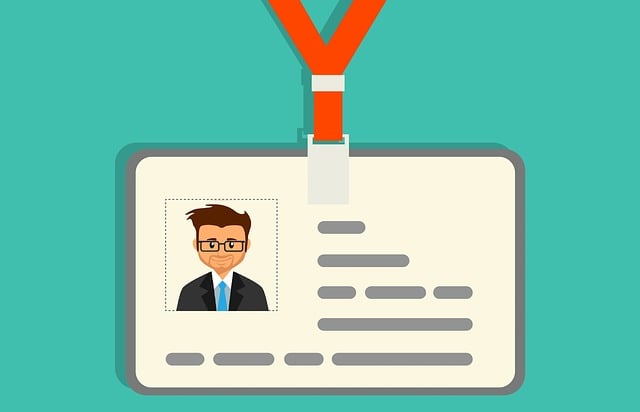In today's digital world, a strong online presence is key for professional success. Regularly performing a self background check and verifying your personal records across various platforms ensures your information is accurate and up-to-date, enhancing your reputation. This involves actively managing your digital footprint by updating contact details, education, work experience, and achievements to maintain professionalism, protect privacy, and foster trust with stakeholders.
In today’s digital age, your online presence can make or break opportunities. A simple search of your name can reveal a lot about you, acting as a 24/7 resume. Ensure yours is professional and clean with this comprehensive guide. We’ll delve into the impact of an online presence, explore the importance of accurate personal data, and provide a step-by-step self background check guide. Learn how to verify your records, avoid common mistakes, and maintain a polished professional online image. Master these strategies to check your own history effectively and present your best self online.
- Understanding the Impact of an Online Presence
- The Importance of Accuracy in Personal Data
- Conducting a Self Background Check: Step-by-Step Guide
- Verifying Your Records: Ensuring Consistency and Credibility
- Common Mistakes to Avoid When Checking Your History
- Maintaining a Professional Online Image: Tips for Longevity
Understanding the Impact of an Online Presence

In today’s digital age, an online presence is akin to a public profile that can shape perceptions and opportunities. Whether it’s for professional networking, job applications, or personal branding, your digital footprint holds significant weight. A thorough understanding of this impact is crucial when ensuring your online presence is professional and clean. It involves regularly conducting a self background check, verifying your own records, and checking your own history. This process includes a self-check for accuracy to ensure that the information shared about you is reliable and up-to-date.
By verifying personal data through these means, you maintain control over what others see and can prevent any inaccuracies or outdated details from undermining your reputation. Remember, potential employers, clients, or business partners often conduct their own background checks, making it essential to present a polished and accurate online image. This proactive approach to managing your digital presence not only enhances your professionalism but also safeguards your privacy and integrity in the virtual realm.
The Importance of Accuracy in Personal Data

Maintaining a professional online presence requires diligence when it comes to sharing and managing your personal data. One often overlooked aspect is ensuring the accuracy of your information across various platforms. Conducting a self background check or verifying your own records is an essential step in presenting yourself credibly online.
When you take the initiative to check your own history and perform a self-check for accuracy, you can identify any discrepancies or outdated details that may reflect poorly on your professionalism. It’s crucial to verify personal data, including contact information, education, work experience, and achievements, as these elements contribute to how others perceive you in the digital realm. By keeping your online profile sharp and precise, you foster trust and open doors to better professional opportunities.
Conducting a Self Background Check: Step-by-Step Guide

Conducting a self background check is an essential step in ensuring your online presence remains professional and clean. It involves verifying your own records to make sure they accurately reflect who you are and what you’ve done. Start by gathering all relevant documents, such as diplomas, certificates, employment histories, and any public records that could be available online. Next, use search engines and official databases to check for any discrepancies or outdated information. Websites like PeopleSearch, Whitepages, and even social media platforms can help you uncover hidden profiles or false information about yourself.
To conduct a thorough self background check, follow these steps:
1. Identify all relevant data points: This includes your full name, addresses, phone numbers, email addresses, and any unique identifiers like Social Security numbers (only if necessary and permitted by law).
2. Utilize online tools and databases: Search for yourself on popular search engines, public records sites, and social media platforms. Cross-verify the information found with your own records to ensure accuracy.
3. Correct any errors: If you find outdated or inaccurate data, reach out to the relevant organizations or individuals to rectify it. Many online services allow you to dispute incorrect information directly through their platform.
4. Regularly update and monitor: Make it a habit to check your own background periodically to ensure nothing unexpected pops up in your digital footprint.
Verifying Your Records: Ensuring Consistency and Credibility

When building an online presence, especially for professional purposes, it’s crucial to start with a thorough self background check. Verifying your own records ensures consistency and credibility across all digital platforms. Conducting a personal background check involves scrutinizing your educational qualifications, work history, and any public records that might reflect on your character or expertise. This self-check for accuracy is vital as it presents the first impression to potential clients, employers, or business partners who may search for you online.
By verifying personal data, you can catch and rectify any inaccuracies or outdated information that might be circulating about you. This includes checking old addresses, employment details, educational institutions, and social media profiles. Keeping your records up-to-date and consistent enhances your professional image, fostering trust and credibility in your abilities and accomplishments.
Common Mistakes to Avoid When Checking Your History

When conducting a self background check or verifying your own records, it’s important to be aware of common mistakes that can compromise the integrity of your online presence. One frequent error is overlooking outdated information. Social media and other digital platforms continuously evolve, and what was shared years ago might not represent your current persona or professional goals. Regularly review and update your profiles to ensure accuracy, especially for details like employment history, education, and personal achievements.
Another blunder is neglecting to fact-check the content you’ve posted. Before hitting ‘share’ or ‘post’, take a moment to verify the information. This includes checking dates, names, and any claims made about your accomplishments or skills. Inaccurate or misleading data can reflect poorly on your professionalism and attention to detail. It’s crucial to maintain a clean and trustworthy online presence by conducting thorough self-checks for accuracy and consistency across all digital platforms.
Maintaining a Professional Online Image: Tips for Longevity

Maintaining a professional online image is crucial in today’s digital era where your digital footprint can leave a lasting impression. A potential employer, client, or business partner might just be one search away, making it essential to ensure your online presence reflects positively on you. Start by conducting a self background check and verify your own records. Search for any outdated or inaccurate information about yourself and take prompt action to rectify it. Regularly check your own history and conduct personal background checks to ensure that everything displayed about you online is accurate and up-to-date. This involves verifying your personal data, including contact information, education details, and professional experiences. Remember, a clean and professional online presence can significantly enhance your credibility and open doors to new opportunities.
To maintain this, stay active on relevant platforms, share valuable content, and engage with your audience or network. Keep your profiles updated, ensure consistent branding across all platforms, and be mindful of the kind of information you make publicly available. Regularly review your privacy settings and limit access to sensitive data. By following these practices, you can self-check for accuracy and maintain a positive digital footprint that reflects well on your professional brand.






